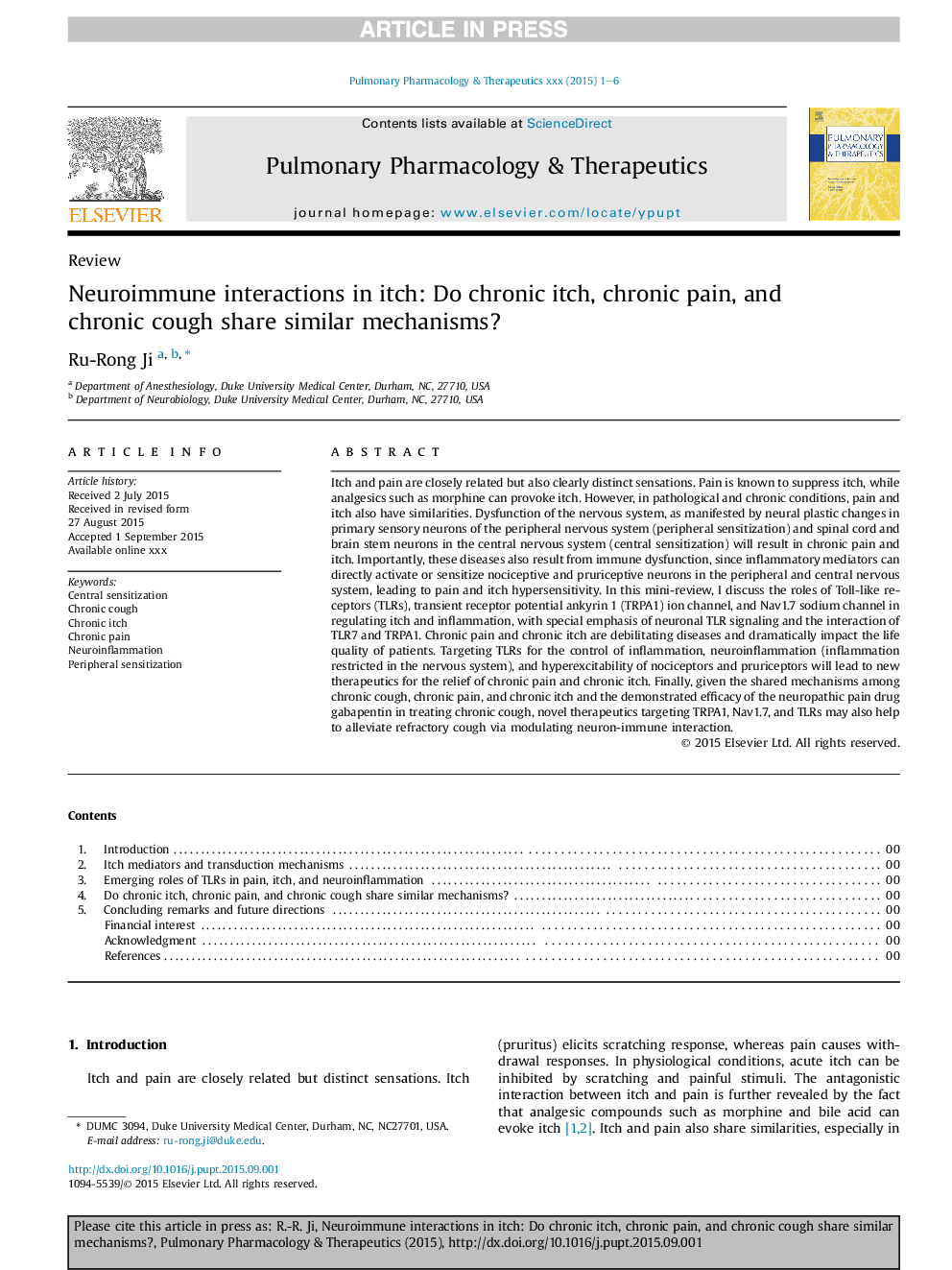| Article ID | Journal | Published Year | Pages | File Type |
|---|---|---|---|---|
| 5845646 | Pulmonary Pharmacology & Therapeutics | 2015 | 6 Pages |
Abstract
Itch and pain are closely related but also clearly distinct sensations. Pain is known to suppress itch, while analgesics such as morphine can provoke itch. However, in pathological and chronic conditions, pain and itch also have similarities. Dysfunction of the nervous system, as manifested by neural plastic changes in primary sensory neurons of the peripheral nervous system (peripheral sensitization) and spinal cord and brain stem neurons in the central nervous system (central sensitization) will result in chronic pain and itch. Importantly, these diseases also result from immune dysfunction, since inflammatory mediators can directly activate or sensitize nociceptive and pruriceptive neurons in the peripheral and central nervous system, leading to pain and itch hypersensitivity. In this mini-review, I discuss the roles of Toll-like receptors (TLRs), transient receptor potential ankyrin 1 (TRPA1) ion channel, and Nav1.7 sodium channel in regulating itch and inflammation, with special emphasis of neuronal TLR signaling and the interaction of TLR7 and TRPA1. Chronic pain and chronic itch are debilitating diseases and dramatically impact the life quality of patients. Targeting TLRs for the control of inflammation, neuroinflammation (inflammation restricted in the nervous system), and hyperexcitability of nociceptors and pruriceptors will lead to new therapeutics for the relief of chronic pain and chronic itch. Finally, given the shared mechanisms among chronic cough, chronic pain, and chronic itch and the demonstrated efficacy of the neuropathic pain drug gabapentin in treating chronic cough, novel therapeutics targeting TRPA1, Nav1.7, and TLRs may also help to alleviate refractory cough via modulating neuron-immune interaction.
Keywords
Related Topics
Health Sciences
Medicine and Dentistry
Pulmonary and Respiratory Medicine
Authors
Ru-Rong Ji,
